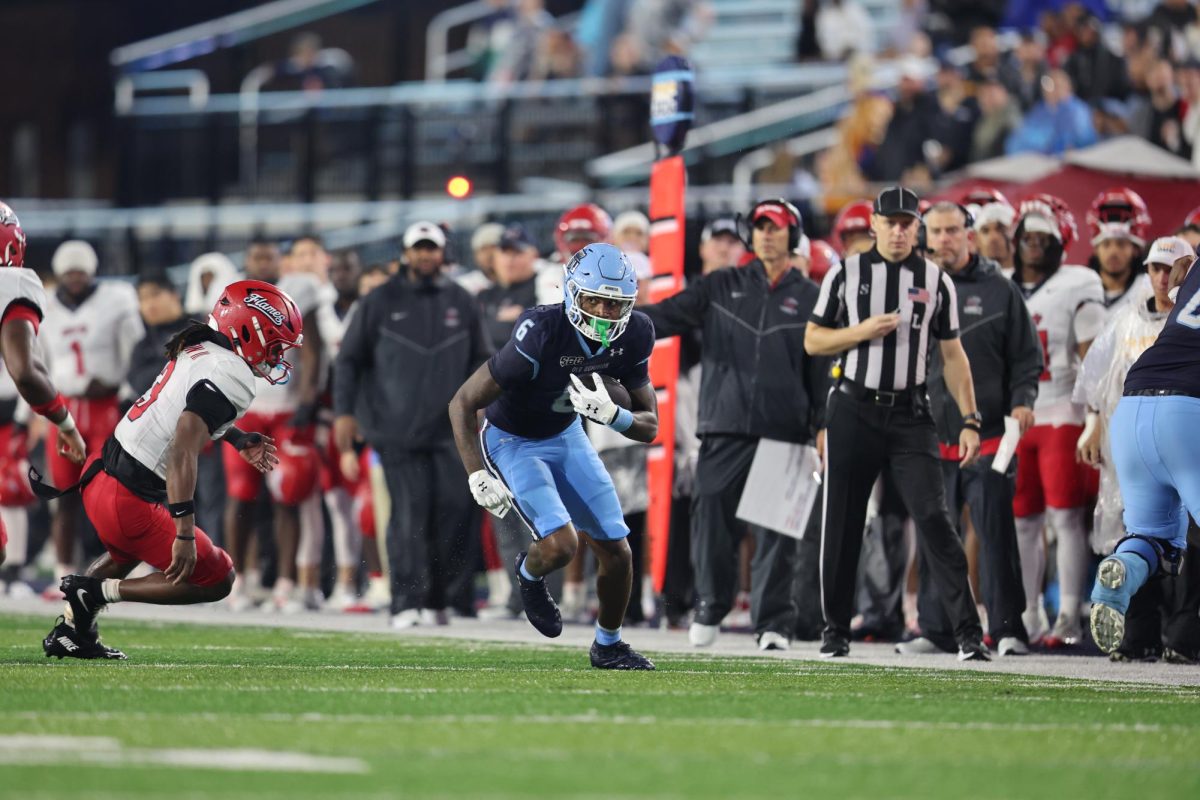When you hear the name “Hideo Kojima,” what phrases or words come to mind? “Metal Gear Solid” would be the most obvious, but in a more broader sense, phrases like “auteur” or “profound” come to mind. Or to some “pretentious” could also come to mind. But we can all agree that, no matter your opinion of the man, the word “Weird” will always come up. That’s what Kojima’s latest game, “Death Stranding” is. Weird.
“Death Stranding” is Hideo Kojima’s first post-Konami game title, published by Sony. After three years of perplexing and mysterious trailers, this highly anticipated title has finally been released.
Starring Norman Reedus, Mads Mikkelsen, Lea Seydoux, Tommie Earl Jenkins, Margaret Qualley, and many more, “Death Stranding” is an action-adventure game. Though calling it that is a little misleading. While there are action-adventure elements, there is a lot more to it.
First off, this game is beautiful. While playing, the game treats the player to absurdly scenic landscapes, reminiscent of those found in Iceland, despite the game taking place in America. It borders on photorealistic at some points. This
The main gameplay loop involves traversing a very hostile/difficult landscape while trying to deliver packages and also to reconnect a shattered America. Confusing, I know. What is the point of it all? Delivering cargo? Or reconnecting America? In “Death Stranding,” both go hand-in-hand.
Though this traversal is broken up by travelling through BT, or “Beached Thing” territory. This turns the game into a stealth game, where the player must sneak past nigh invisible ghost-things. Should you be spotted, the player will have to break out of the Beached Thing’s grasp and get to a safer area.
The controls are smooth, but quite involved and detailed. Every single button on the controller has a purpose. While this may seem overwhelming, the use of each button is integrated into the gameplay loop quite seamlessly. Though there is a lot of micromanaging in terms of button usage.
For example,while running downhill, if you come to too steep of an incline, Sam will begin to lose footing and can keep running out of control. The player will then have to hold both the R2 and L2 buttons to regain control and stop running. Or if you have too much on your back, you will occasionally lose balance and will have to hold those same buttons to regain your balance, dependant on which side you’re leaning to.
The methods of traversal are diverse and allow for much creativity. Throughout the game, the player is given ladders, climbing anchors, ropes, and other more elaborate methods, in order to make your deliveries. For example, while a ladder can be used to travel vertically up a particularly treacherous mountain, or steep cliff face, it can also be used to create a makeshift bridge.
These ladders, ropes, and other structures that you leave behind can also benefit other players who are on your server. Similar to leaving notes in From Software’s “Dark Souls” series, other players can come across the structures you create and leave ratings. This also applies to paths the player sets. Cargo can also be left behind by players, and returned by other players.
When it comes to the story and characters, things get a little a muddled. The characters, in typical Kojima fashion, have their own little quirks and odd names. Though their dialogue can get a little repetitive. Characters will often repeat themselves, just with different wording and are mostly vehicles for info-dumps. Though this does not stop them from being compelling in their own ways.
The story is slow. For the first few chapters, the story takes a backseat to traversal and package delivery. This isn’t to say that there is no story. Again, in typical Kojima fashion, the cutscenes are long and chock-full of exposition. Though these cutscenes are well shot and acted. So at points, it’s like sitting through a movie. A movie that has a very very very long interactive sections.
Overall, this is certainly a Hideo Kojima game, for better or worse. Despite having a pretty slow start, the game offers a gripping, though odd narrative, populated with memorable characters, with an entrancing soundtrack. Coupled with some of the most beautiful visuals of this console generation, “Death Stranding” is definitely a game worth picking up, if not just for the experience.








